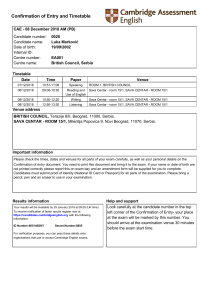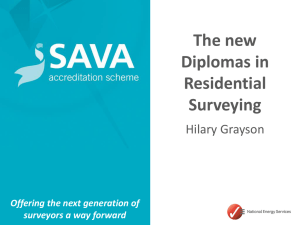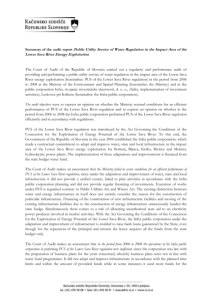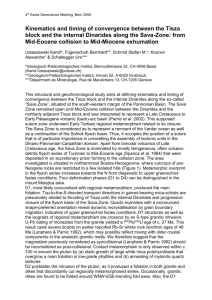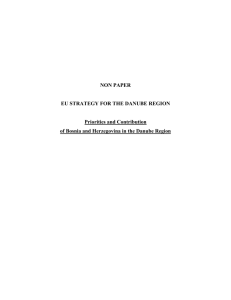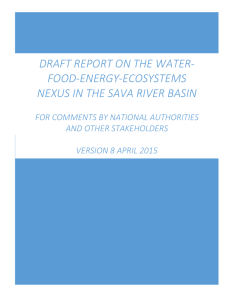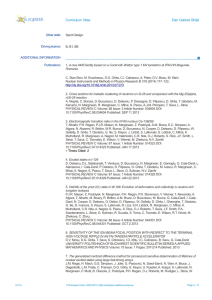Stable isotope analysis
advertisement
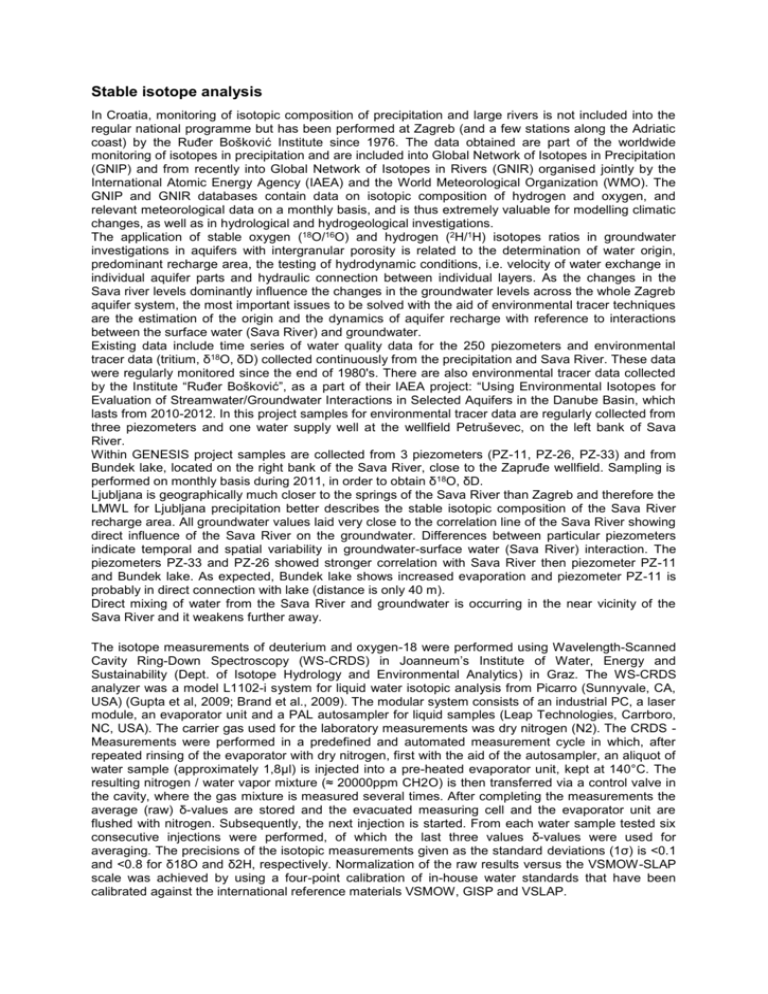
Stable isotope analysis In Croatia, monitoring of isotopic composition of precipitation and large rivers is not included into the regular national programme but has been performed at Zagreb (and a few stations along the Adriatic coast) by the Ruđer Bošković Institute since 1976. The data obtained are part of the worldwide monitoring of isotopes in precipitation and are included into Global Network of Isotopes in Precipitation (GNIP) and from recently into Global Network of Isotopes in Rivers (GNIR) organised jointly by the International Atomic Energy Agency (IAEA) and the World Meteorological Organization (WMO). The GNIP and GNIR databases contain data on isotopic composition of hydrogen and oxygen, and relevant meteorological data on a monthly basis, and is thus extremely valuable for modelling climatic changes, as well as in hydrological and hydrogeological investigations. The application of stable oxygen (18O/16O) and hydrogen (2H/1H) isotopes ratios in groundwater investigations in aquifers with intergranular porosity is related to the determination of water origin, predominant recharge area, the testing of hydrodynamic conditions, i.e. velocity of water exchange in individual aquifer parts and hydraulic connection between individual layers. As the changes in the Sava river levels dominantly influence the changes in the groundwater levels across the whole Zagreb aquifer system, the most important issues to be solved with the aid of environmental tracer techniques are the estimation of the origin and the dynamics of aquifer recharge with reference to interactions between the surface water (Sava River) and groundwater. Existing data include time series of water quality data for the 250 piezometers and environmental tracer data (tritium, δ18O, δD) collected continuously from the precipitation and Sava River. These data were regularly monitored since the end of 1980's. There are also environmental tracer data collected by the Institute “Ruđer Bošković”, as a part of their IAEA project: “Using Environmental Isotopes for Evaluation of Streamwater/Groundwater Interactions in Selected Aquifers in the Danube Basin, which lasts from 2010-2012. In this project samples for environmental tracer data are regularly collected from three piezometers and one water supply well at the wellfield Petruševec, on the left bank of Sava River. Within GENESIS project samples are collected from 3 piezometers (PZ-11, PZ-26, PZ-33) and from Bundek lake, located on the right bank of the Sava River, close to the Zapruđe wellfield. Sampling is performed on monthly basis during 2011, in order to obtain δ18O, δD. Ljubljana is geographically much closer to the springs of the Sava River than Zagreb and therefore the LMWL for Ljubljana precipitation better describes the stable isotopic composition of the Sava River recharge area. All groundwater values laid very close to the correlation line of the Sava River showing direct influence of the Sava River on the groundwater. Differences between particular piezometers indicate temporal and spatial variability in groundwater-surface water (Sava River) interaction. The piezometers PZ-33 and PZ-26 showed stronger correlation with Sava River then piezometer PZ-11 and Bundek lake. As expected, Bundek lake shows increased evaporation and piezometer PZ-11 is probably in direct connection with lake (distance is only 40 m). Direct mixing of water from the Sava River and groundwater is occurring in the near vicinity of the Sava River and it weakens further away. The isotope measurements of deuterium and oxygen-18 were performed using Wavelength-Scanned Cavity Ring-Down Spectroscopy (WS-CRDS) in Joanneum’s Institute of Water, Energy and Sustainability (Dept. of Isotope Hydrology and Environmental Analytics) in Graz. The WS-CRDS analyzer was a model L1102-i system for liquid water isotopic analysis from Picarro (Sunnyvale, CA, USA) (Gupta et al, 2009; Brand et al., 2009). The modular system consists of an industrial PC, a laser module, an evaporator unit and a PAL autosampler for liquid samples (Leap Technologies, Carrboro, NC, USA). The carrier gas used for the laboratory measurements was dry nitrogen (N2). The CRDS Measurements were performed in a predefined and automated measurement cycle in which, after repeated rinsing of the evaporator with dry nitrogen, first with the aid of the autosampler, an aliquot of water sample (approximately 1,8μl) is injected into a pre-heated evaporator unit, kept at 140°C. The resulting nitrogen / water vapor mixture (≈ 20000ppm CH2O) is then transferred via a control valve in the cavity, where the gas mixture is measured several times. After completing the measurements the average (raw) δ-values are stored and the evacuated measuring cell and the evaporator unit are flushed with nitrogen. Subsequently, the next injection is started. From each water sample tested six consecutive injections were performed, of which the last three values δ-values were used for averaging. The precisions of the isotopic measurements given as the standard deviations (1σ) is <0.1 and <0.8 for δ18O and δ2H, respectively. Normalization of the raw results versus the VSMOW-SLAP scale was achieved by using a four-point calibration of in-house water standards that have been calibrated against the international reference materials VSMOW, GISP and VSLAP.
